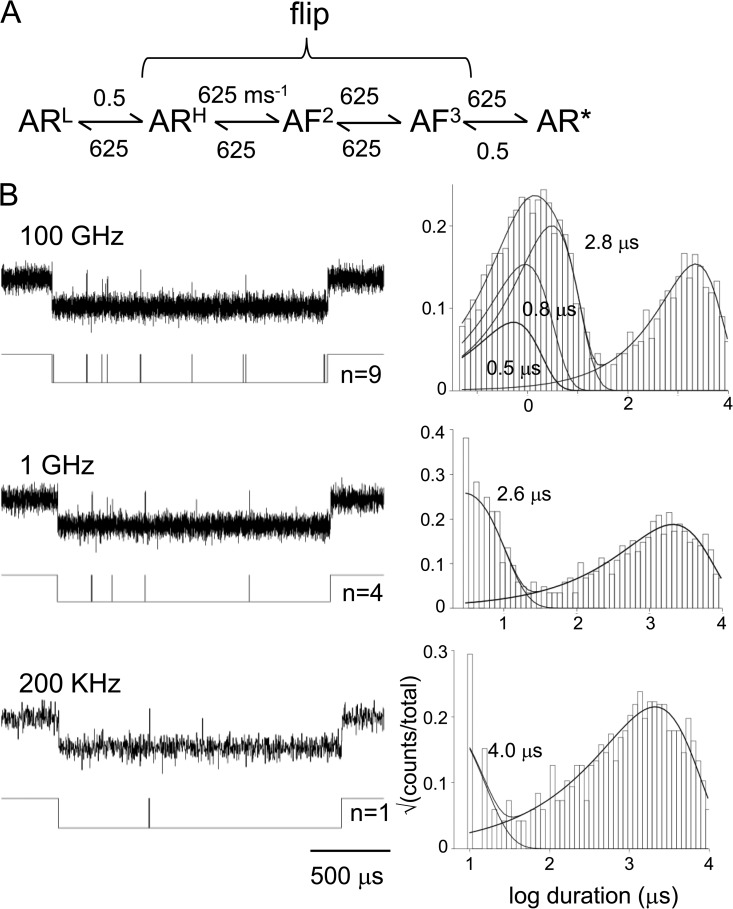Figure 5.
The relationship between catch-and-hold and preopen states. (A) Scheme 4 was used to simulate single-channel currents. ARH, AF2, and AF3 each had a lifetime of 0.8 µs, and ARL and AR* (the only open-channel state) had a lifetime of 2 ms. In this model, the forward hold conformational change (ARL→ARH) is the first step of a flip sojourn in the entire transition-state ensemble. (B; left) An example burst of openings shown at different sampling frequencies. The idealized current trace (determined after filtering to half of the sampling frequency) is shown below; n is the number of detected shut intervals in each burst. (Right) Shut-interval duration histograms from the idealization. At all sampling frequencies, a long-lived shut component is apparent that corresponds to sojourns in ARL. The briefer components reflect sojourns in the aggregate [ARH, AF2, AF3] that merge into a single flip event with decreasing sampling rates. At 200 kHz, there is only a single ∼4-µs gap apparent.

